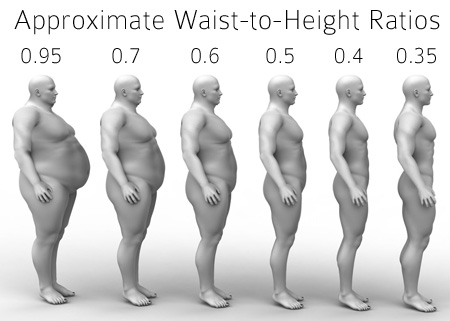Waist-to-Height Ratio as a Screening Tool for Testosterone Deficiency
- Published in Testosterone Replacement Therapy

A bidirectional relationship exists between excess body fat, and/or belly fat, and testosterone levels in men. That is, excess body (belly) fat decreases testosterone levels and may cause testosterone deficiency, and low testosterone levels increases body (belly) fat.[1-4] I covered this in-depth in a previous article “Testosterone and Fat Loss - the Evidence”.
In “Keep your waist to less than half your height” I introduced the waist-to-height ratio and explained that it is a better tool for predicting health outcomes and mortality than is waist circumference alone. I have also covered the association between a large waist (i.e. belly) and reduced testosterone levels in "Young Men, Waist, Testosterone and Erectile Function: Low-T is not only an old man's issue".
Here I will summarize research showing that the waist-to-height ratio can also be used as a screening tool for testosterone deficiency.
Testosterone Therapy Prevents Gain in Intra-Abdominal Fat and Counteracts Loss of Muscle in Non-Obese Aging Men
- Published in Testosterone Replacement Therapy

Testosterone deficiency is especially common in men who are obese and/or have the metabolic syndrome or diabetes, with a prevalence ranging from 35% to almost 80%.[1-5] However, there is a subgroup of non-obese men who have low testosterone levels and suffer from typical symptoms of low-T, but who do not (yet) have any co-morbidities.
Many studies show that suboptimal testosterone levels may contribute to the development of obesity (including abdominal obesity) [6, 7], metabolic syndrome [8-13] and/or diabetes.[9, 14-20] Therefore, testosterone therapy in non-obese men with testosterone deficiency may be an effective intervention to correct not only symptoms associated with hypogonadism, but also prevent the development of obesity, metabolic syndrome and/or diabetes.
A notable study was set out to specifically investigate this…



